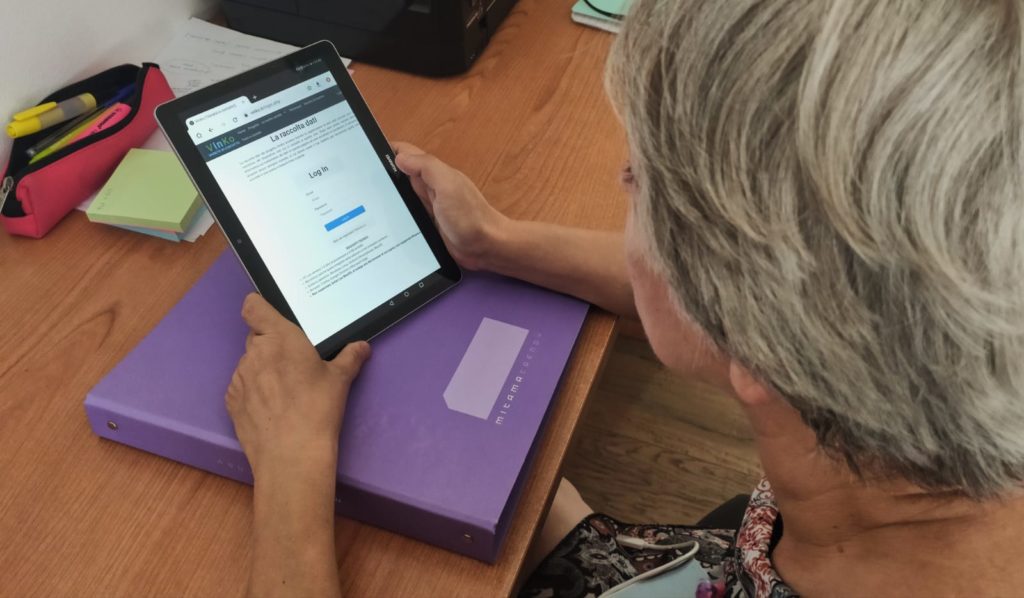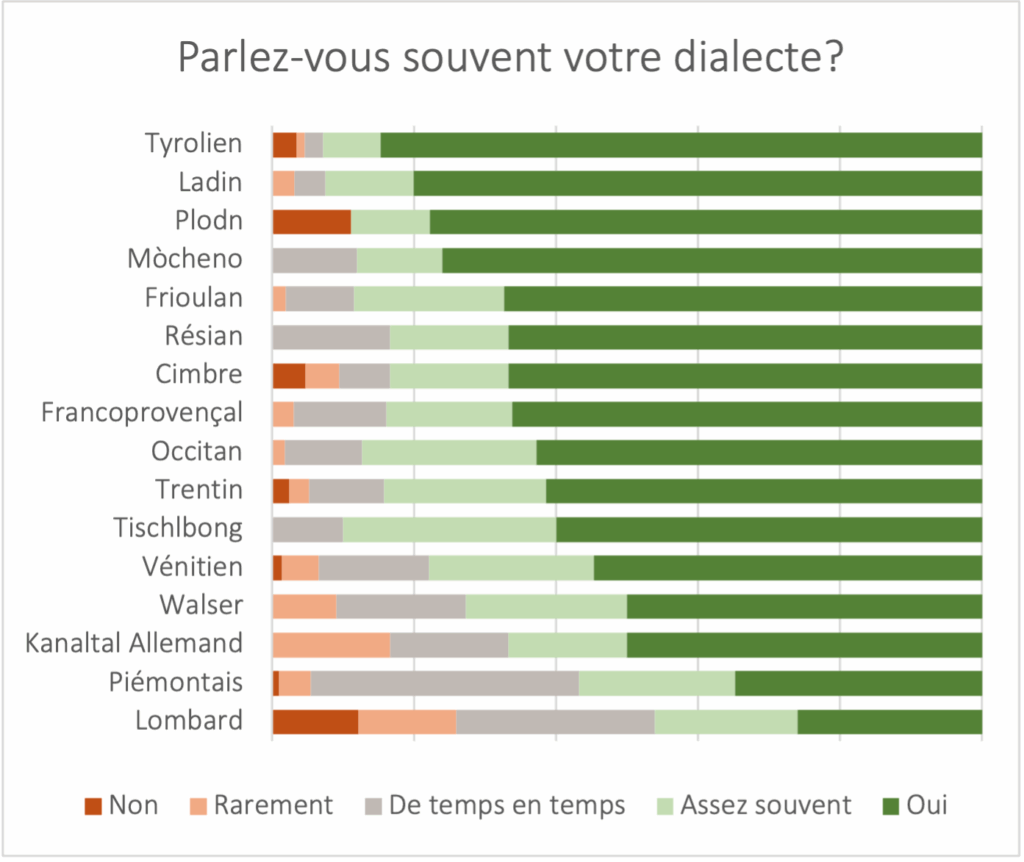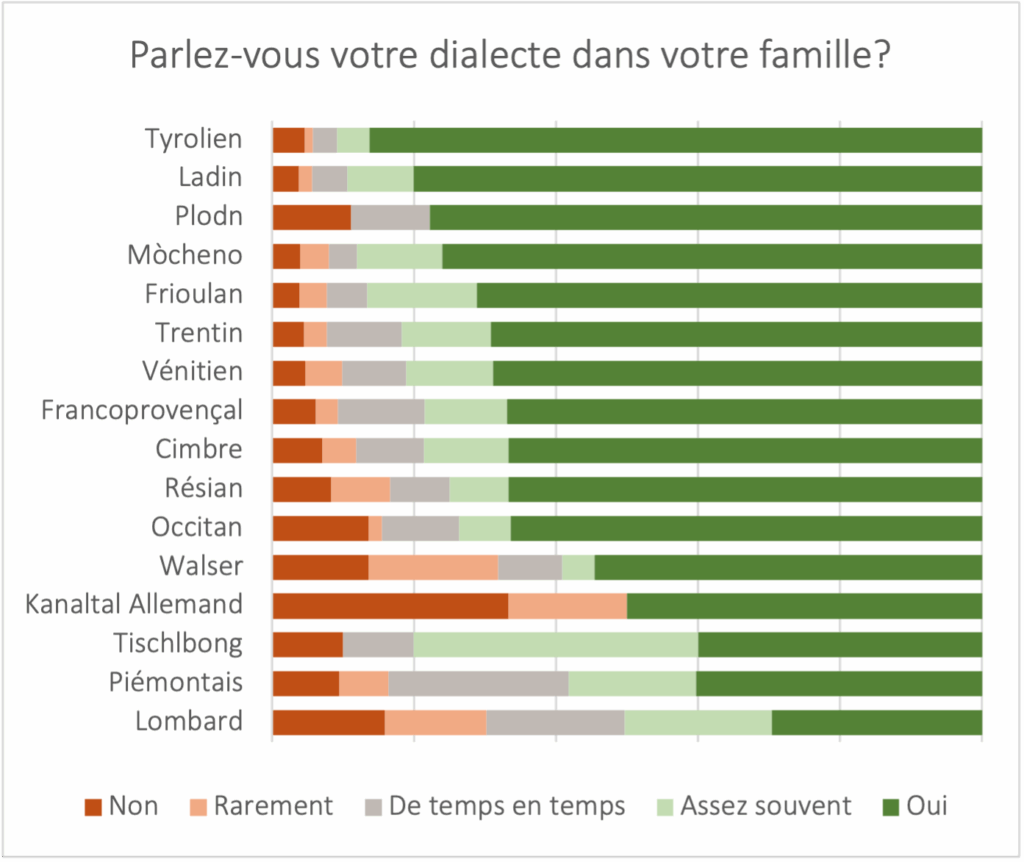La collecte des données pour le projet AlpiLinK a débuté avec l’ouverture du questionnaire en ligne en juillet 2023 et se terminera à la fin de juin 2025. Pendant cette période, 1.781 personnes provenant de 766 localités différentes ont complété le questionnaire. Des locuteurs représentant les 18 variétés linguistiques décrites dans la section “Nos variétés linguistiques” ont participé à l’enquête, apportant une contribution précieuse à la recherche scientifique ainsi qu’à l’écoute du grand public, avec un total de 57.108 fichiers audio recueillis.
Deux années de collecte de données
Participants, localités et enregistrements audio recueillis

Les participants ont un âge moyen de 48,9 ans, ce qui est très similaire à la moyenne nationale italienne qui est de 46,4 ans (ISTAT, 2022). Le plus jeune participant est un enfant de 4 ans parlant le francoprovençal ; le plus âgé, un locuteur ladin de 101 ans, originaire de la Val Badia. En analysant les différentes variétés linguistiques, on observe que les locuteurs des dialectes walser présentent l’âge moyen le plus élevé (74,2 ans), tandis que le groupe ladin est le plus jeune, avec une moyenne d’âge de 41 ans.
La répartition des données selon le genre est très équilibrée: 49,5 % s’identifient comme hommes, 49,6 % comme femmes, et 0,9 % comme appartenant à une autre identité de genre. Dans l’ensemble des variétés linguistiques, cette diversité est plutôt bien représentée. Cependant, on peut observer des déséquilibres significatifs dans certains cas, comme le sappadino, dialecte de Plodn, (67 % de femmes contre 33 % d’hommes), le mòcheno (68 % de femmes et 32 % d’hommes), le résian (83 % de femmes contre 17 % d’hommes) et le timavese, dialecte de Tischlbong, (80 % de femmes et 20 % d’hommes), où la participation féminine est clairement prédominante par rapport à celle des hommes.
Dans la première section du questionnaire, les participants sont invités à évaluer leurs compétences linguistiques ainsi que la fréquence d’usage de la langue. Par exemple: “Parlez-vous bien le dialecte?/Le parlez-vous souvent?”. Les graphiques présentés dans la suite de l’étude offrent une vue d’ensemble détaillée de toutes les variétés étudiées et des réponses fournies.
Quelle que soit la variété choisie, la majorité des participants déclare avoir une très bonne (65,7 %, vert foncé) ou bonne (22,9 %, vert clair) compétence linguistique. En ce qui concerne l’usage de la langue en général, notamment dans les contextes familiaux et amicaux, deux tendances se dégagent. D’une part, les locuteurs des langues minoritaires reconnues déclarent un usage plus fréquent que ceux des dialectes. D’autre part, une tendance géographique se dessine : à mesure qu’on se dirige de l’est à l’ouest, la fréquence de l’utilisation diminue. Les dialectes tyroliens du Haut-Adige sont largement utilisés tant en famille qu’avec les amis. (La variété de Zahre et celle du slovène de la Val Canale ne sont pas représentées dans les graphiques, car chacune ne compte qu’un seul locuteur.)
La majorité des enregistrements audio est accessible via la carte interactive disponible dans la section “Écouter & Explorer“. Pour consulter l’intégralité des données, veuillez visiter le corpus AlpiLinK à l’adresse suivante: https://zenodo.org/doi/10.5281/zenodo.8360169.
Référence bibliographique
- Rabanus, Stefan, Anne Kruijt, Birgit Alber, Ermenegildo Bidese, Livio Gaeta, et Gianmario Raimondi. 2025. AlpiLinK Corpus 1.2.0. En collaboration avec Paolo Benedetto Mas, Sabrina Bertollo, Serena Bissolo, Angelica Bonelli, Dario Capelli, Jan Casalicchio, Raffaele Cioffi, Patrizia Cordin, Silvia Dal Negro, Ilaria Driussi, Sara Erriu, Alexander Glück, Joachim Kokkelmans, Adriano Murelli, Andrea Padovan, Aline Pons, Matteo Rivoira, Marta Tagliani, Caterina Saracco, Alessandra Tomaselli, Ruth Videsott, Alessandro Vietti & Barbara Vogt. DOI : https://doi.org/10.5281/zenodo.1512971.




